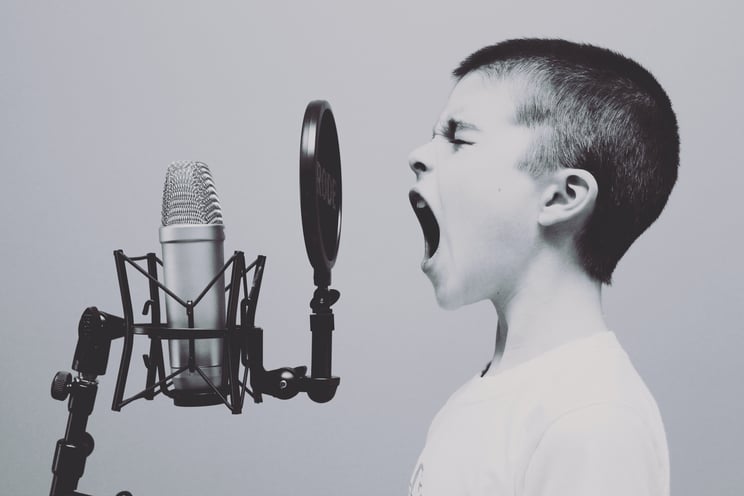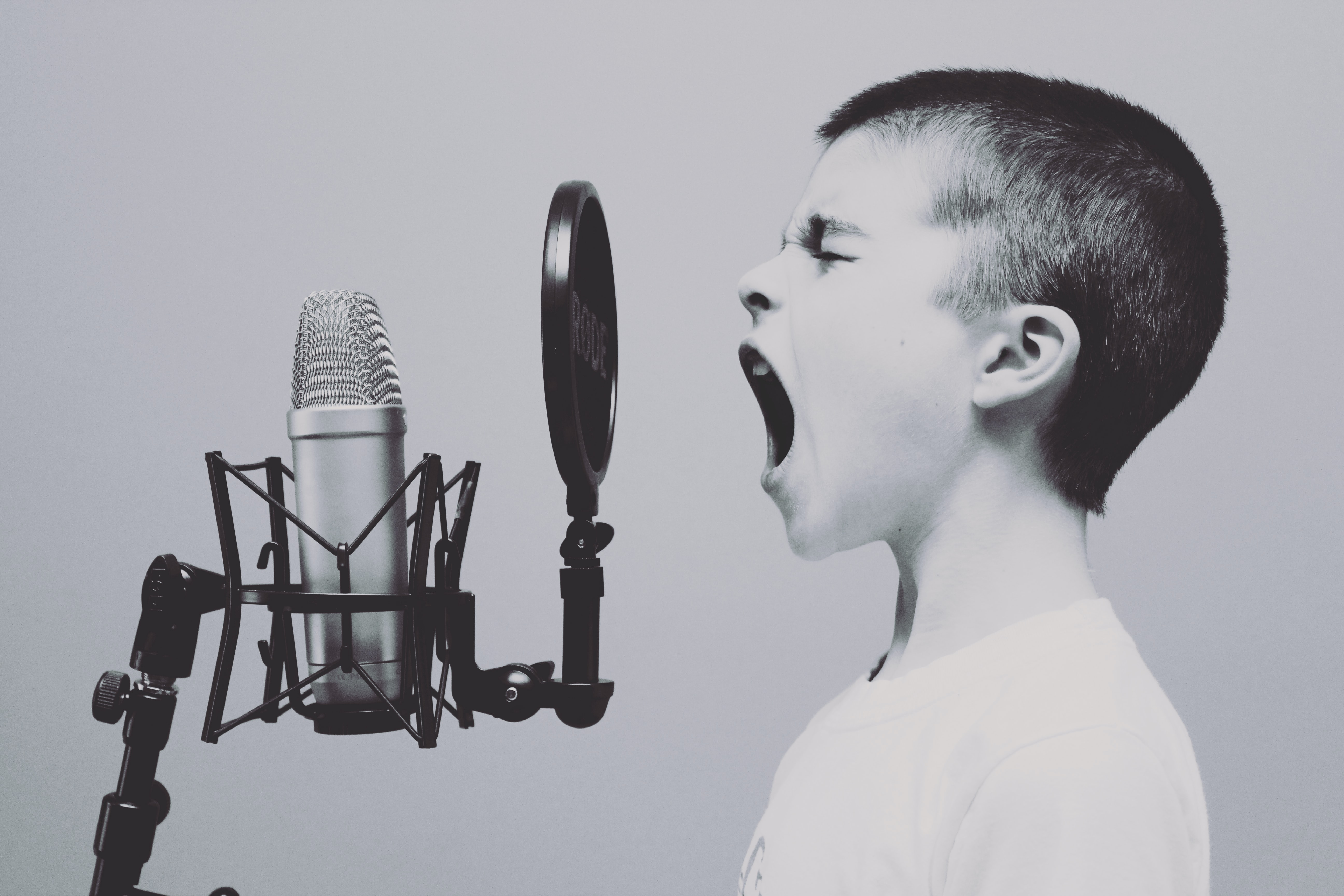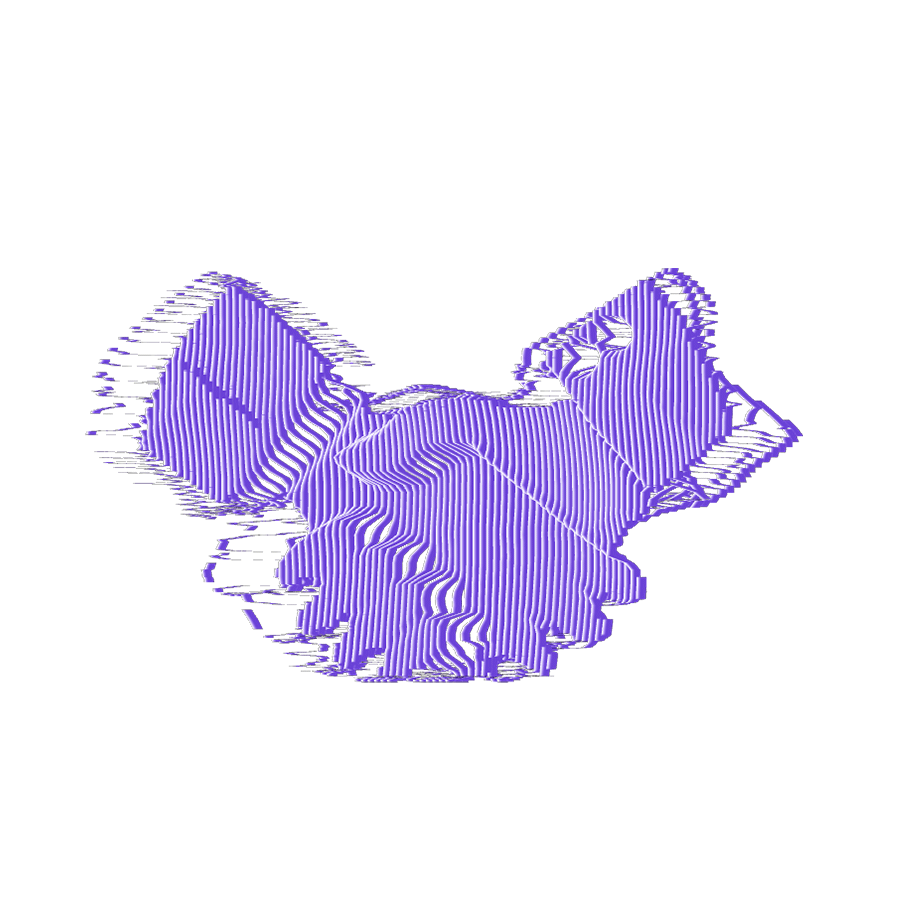Voice Conversion for Children's Voices: Additional Dialogue Recording (ADR) and Animation Dialogue

Child actors have the power to make movies unique. But making a major motion picture with children can be difficult, especially when it comes to additional dialogue recording (ADR) for multiple scenes and characters. Let's talk about the price paid by sound engineers when dubbing and how speech-to-speech (STS) voice conversion technology can make production easier.
A short history of Additional Dialogue Recording (ADR)
Voice cloning was never easy. Until the late 20s, audio technology capable of re-recording a film simply didn’t exist. Only in the 1930s, studios started dubbing their movies in foreign languages to reach a greater audience.
In those years, the position of dubbing director was the responsibility of the film’s chief director. Not because the production process was so complicated. But because sound engineers had to record a loop of a movie that would play repeatedly.
Background sounds such as city noise, off-screen crowd conversations, and others, are translated into loops. Then, voices with the actors' dialogues are layered on top of them.
Today, producers rely on computers to create loops. This significantly speeds up the dubbing preparation process and facilitates the work of audio engineers. However, the dubbing process is still highly dependent on the willingness of the actors to complete the work demanded of them while in the studio.
Traditional ADR vs Speech-to-Speech voice conversion technology?
As you already know, additional dialogue recording (ADR) is the process of dubbing the original dialogue of a movie after filming has wrapped.
Traditionally, audio engineers meet with an actor in a studio for re-recording. The desired scene is replayed in front of the actor dozens of times over and over. The actor is then able to perform the dialogue in a way that most resembles the original scene's time frames.
But there is another way that is faster and less expensive. Today's AI voice changers and voice generators like Respeecher offer a groundbreaking alternative to traditional ADR, allowing sound engineers to bypass the logistical hurdles of studio re-recordings with child actors. Respeecher's AI-powered voice cloning is at the forefront, enabling:
1. Synthesizing unlimited authentic audio content without involving any actors
Simply feed one hour of the original actor's dialogue into the voice conversion system. Then, the system can convert that speech to the desired speech of the voice actor.
2. Recreating the original actor's voice using the speech of any person as its point of reference
Just imagine that you can read a dialogue and Respeecher makes it sound like it was read by Tom Hanks or Angelina Jolie. All this while maintaining the original intonation and emotion that you used while reading the text.
3. For the first time in history, dubbing films into foreign languages while retaining the actor's authentic voice
This is because artificial intelligence (AI) is not affected by the language in which speech should be synthesized. As long as a person can speak clearly, Respeecher can transform their voice into the original actor's voice.
Why is ADR so different for children and how can it be made easier?
Working with children voice actors on set is both easy and challenging at the same time. Sincere child emotions and acting combine with fickle moods and problems with concentration. The smaller the child, the more challenges the crew will face filming the child in the way their film demands.
When it comes to re-dubbing episodes of a film that has already wrapped shooting, even seasoned actors often encounter difficulties. With children, things are even more difficult.
Typical production frictions are not only limited to the issues of young actors. Here are some of the most common issues sound engineers face when organizing the ADR process:
1. Legal requirements
In most European countries, you cannot have a child work for more than 1 hour per day. When scheduling is tight (and ADR can take hours of work for a 60-second scene), this can be a major show stopper.
2. Parents are sometimes not as pleasant as their children
Understand correctly, we are all human. And when it comes to our children's work, we don't compromise. This is why audio engineers are under additional pressure from parents attending a recording session.
While audio engineers understand and respect parents and their children, they would rather minimize their role in order to speed up the production.
3. Changes in voice as a child grows up
Typical production cycles for a movie can take anywhere from 9 months to a couple of years. If you decide to re-record something, be prepared for an unpleasant surprise - the young actor's voice could have changed during this time. This means that the dubbing will contrast strongly with the remaining audio track.
4. Acting skills
Young movie stars who have perfectly revealed themselves on a set often cannot enter the role while in a studio. This can be problematic even for adults and even more difficult for children.
Sometimes the sound engineering team has to act out entire scenes so that children can again demonstrate their skills at their best. All these factors combined contribute toward stagnating the process of ADR even further.
Is synthetic speech technology (STS) a game-changer for ADR and children?
In STS voice conversion technology, children may not be present in the studio for additional dialogue replacement (ADR). It is enough to record one hour of a child actor’s voice so that an adult can then read the dialogue for them.
Using an hour-long recording as a reference, any voice can be synthesized into the child's while retaining all shades of emotion, accent, and characteristics of speech. This means that sound directors no longer have to drag actors to the studio with their parents.
Instead of a child, a professional dubbing actor can dub the scene, thereby saving the nerves of parents, children, and the entire production team.
Voice cloning technology has its limitations and a host of possible issues. Nevertheless, these all are technical matters and can almost always be resolved by engineers without involving actors.
Likewise, speech to speech is of absolute importance for animated films and animation dialogues. First, it is completely possible to create a synthesized voice that is based entirely on the hero's identity, completely from scratch.
That voice can then be used for the entire length of the movie and even modified to fit for every character interaction, and not just for the purpose of re-dubbing individual roles or scenes.
Secondly, unlike film movies, animation characters never age. Hiccup from the How to Train Your Dragon franchise has to remain the same age, no matter how many years passed between the first movie to the third.
Respeecher’s voice cloning tech empowers producers to create and maintain the unique identity of a ten-year-old hero throughout an entire movie franchise cycle. This is far more convenient and cost-effective than using traditional actors for dubbing.
If you're looking to replicate a child's voice, create multi-language dubs, or create animation dubbing for an entire movie, we encourage you to give Respeecher a try. You will quickly lose track of how many hours, headaches you’ll manage to save, along with greatly reduced production costs. Contact us for more details and to find the best option for you.
FAQ
ADR (Additional Dialogue Recording) is the process of re-recording dialogue after filming. Respeecher improves this by using AI for dubbing and speech-to-speech technology, enabling voice cloning and preserving the original actor’s voice. This eliminates the need for extensive studio sessions with actors.
Speech-to-speech technology allows dubbing without the presence of the child actor. By using just one hour of the actor’s voice, Respeecher can create a synthetic voice that mimics the child’s speech, making it easier and more cost-effective to complete the ADR process.
Challenges with child actors in ADR include legal restrictions on work hours, voice changes as children grow, and difficulty maintaining performance consistency. Respeecher’s AI voice cloning addresses these issues by synthesizing the child's voice, bypassing the need for re-recording with the actor.
AI voice cloning enables seamless multilingual dubbing by synthesizing voices in different languages while retaining the original actor’s voice and emotion. With Respeecher, the actor’s voice can be transformed into any language without losing its authenticity, saving time and costs.
Speech-to-speech technology is a game-changer for animation voice production as it allows for creating synthetic voices that match a character’s identity, even when the actor ages. Respeecher ensures consistency, so characters like Hiccup from How to Train Your Dragon maintain their voice identity across films.
Glossary
ADR Technology
Speech-to-Speech Voice Conversion
A process that uses Respeecher’s AI to transform one voice into another, enabling synthetic voice dubbing, child voice cloning, and overcoming ADR challenges in animation voice production and film.
Child Voice Cloning
Using Respeecher’s speech-to-speech voice conversion and AI for dubbing to replicate child voice actors, overcoming ADR challenges in animation voice production.
Animation Voice Production
Using AI for dubbing and Respeecher’s speech-to-speech voice conversion to create synthetic voice dubbing for child voice actors in animated films.
AI for Dubbing








